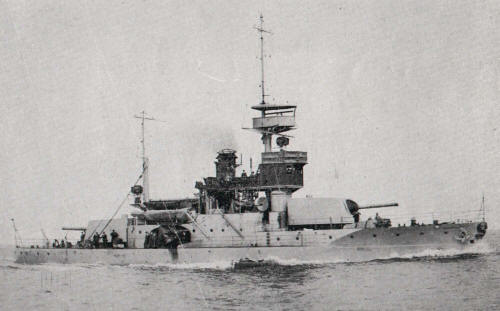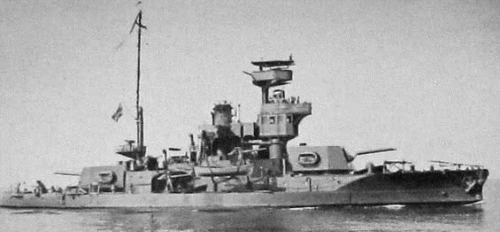
NAVYPEDIA
 Support the project with paypal
Support the project with paypal
Photo

Ratanakosindra 1926
Ships
| Name | No | Yard No | Builder | Laid down | Launched | Comp | Fate |
|---|---|---|---|---|---|---|---|
| รัตนโกสินทร์ [Ratanakosindra] | Armstrong, Elswick, UK | 9.1924 | 21.4.1925 | 8.1925 | stricken 10.1967 | ||
| สุโขทัย [Sukothai] | Vickers-Armstrong, Barrow, UK | 12.1928 | 19.11.1929 | 12.1930 | stricken 1971 |
Technical data
| Displacement standard, t | 886 |
|---|---|
| Displacement full, t | 1000 |
| Length, m | 48.8 pp 53.0 oa |
| Breadth, m | 11.3 |
| Draught, m | 3.28 |
| No of shafts | 2 |
| Machinery | 2 VTE, 2 Yarrow boilers |
| Power, h. p. | 850 |
| Max speed, kts | 12 |
| Fuel, t | oil 96 |
| Endurance, nm(kts) | 2000(10) |
| Armour, mm | belt: 57 - 32, deck: (25 - 13) + 25, turrets: 38, barbettes: 38, CT: 120 |
| Armament | 2 x 1 - 152/50 EOC TT, 4 x 1 - 76/40 EOC N |
| Complement | 102 |
Standard scale images

Ratanakosindra 1935

Ratanakosindra 1960
Graphics
Project history
Program of strengthening of Siamese Navy accepted in 1914 provided the order in the Great Britain of two original armoured gunboats (actually low-freeboard monitors). Total displacement should make 1070t, armament consisted from 4 152mm/50 and 4 76mm/40 Armstrong guns, machinery included VTEs and cylindrical coal-firing boilers. Lead Ratanakosindra was laid down in 1914 by Armstrong in Elswick, but in connection with beginning of the First World War building was suspended, and partially assembled hull was broken up to clear a slipway. Ship was re-ordered in 1924 under changed design. Number of main guns was decreased to two, cylindrical boilers were replaced by Yarrow oil-firing water-tube boilers, also VTEs of a new construction were installed, but with the same power. The given measures have allowed to increase a fuel stowage (normal from 15 to 85t, and full from 50 to 96t) and thus to decrease a draught a little. Ratanakosindra was built at High Walker, 10.8.1925 she was commissioned and 31.8.1925 departured from Britain to Siam, but those day she received damages as result of collision and returned to builder for repair; she ultimately left Great Britain 29.10.1925. Sukothai ("City of angels": a poetical name of Bangkok) was ordered in 1928 to already Vickers-Armstrong, building was conducted in Barrow. Ships differed by rather unusual hull structure combining low free board typical for monitors with raised forecastle, improving seaworthiness. On trials Ratanakosindra shown 12.892kts. Outwardly Sukothai differed by increased bridge and transferred on 3m aftward funnel.
Ship protection
Main belt, 2m in height, had 57mm thickness amidships, decreasing to 32mm at ship ends. There were two armoured decks: upper had 25mm thickness over machinery, 19mm over aft end and 13mm over fore end, lower deck was uniform with 25mm thickness. Turrets and barbettes had 38mm protection from all directions, CT had 120mm armour.
Modernizations
mid-1930s, both: + 2 x 1 - 40/39 2pdr QF Mk II
mid-1940s, both: + 2 x 1 - 20/65 Breda 1939
1960s, both (presumably): + radar
Naval service
Both ships served more than 40 years.
 HOME
HOME FIGHTING SHIPS OF THE WORLD
FIGHTING SHIPS OF THE WORLD SIAM / THAILAND
SIAM / THAILAND OTHER FIGHTING SHIPS
OTHER FIGHTING SHIPS RATANAKOSINDRA armoured gunboats (1925-1930)
RATANAKOSINDRA armoured gunboats (1925-1930)

